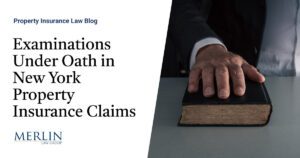What Ontario’s DCPD change means for insureds, brokers

Ontario’s insurance regulator has passed OPCF 49, which gives consumers the choice to opt out of Direct Compensation-Property Damage (DCPD) coverage on auto policies. But the change may not save consumers as much money as they think it will, one broker says.
The requirement for insurers to offer this elective policy option will be effective Jan. 1, 2024. It was announced in late 2022.
The option is one of several ways the Ontario government planned to provide more choice for consumers in its 2022 budget. Other proposed measures include more access to usage-based insurance (UBI) programs, a pledge to crack down on insurance fraud, and re-examining how postal codes are used to determine premiums.
Ontario’s insurance regulator, the Financial Services Regulatory Authority (FSRA), indicated on its website it worked with the province’s property and casualty industry to come up with a way for consumers to opt out of DCPD coverage.
Basically, in exchange for a premium discount, the OPCF 49 form gives the policyholder’s consent for the insurance company not to be compensate them for any physical damage to their car if it’s involved in a collision. The OPCF form states:
“WARNING – By signing this form, you agree you cannot claim Direct Compensation Property Damage and Collision
or Upset Coverage: If the described vehicle is damaged in a collision the loss will not be compensated even if you are not at fault. You will not be compensated by this insurance policy, or by anyone else, including anyone at fault for causing the damage, or their insurance company.
“Not being compensated means you will not be reimbursed for any loss or damage to the described automobile including:
repair costs;
the value of the vehicle;
the loss of use of the vehicle;
a replacement for the vehicle; or
loss or damage to any one of the vehicle’s contents
If you lease or finance the vehicle, you should not sign this form without consulting with the lease or financing company because you may be personally responsible for its loss or damage.”
One veteran broker waved a red flag about this option in a social media post on LinkedIn. In and of itself, the opt out of DCPD auto coverage doesn’t address the core wish of a majority of consumers — lower premiums, he said.
“In all my years in the insurance industry, I have never had a client say, ‘I wish I had no insurance coverage for [my] car when someone else hits my car,’” John Baizana, long-time insurance broker, said in a LinkedIn post.
“It is my opinion that this change does nothing to address consumer concerns regarding lowering auto insurance premiums,” he said in a follow-up statement to Canadian Underwriter. “The introduction of this ‘choice’ does not address, and only distracts, from the real issues of fraud, waste, and inefficiencies in the system.”
Uptake on this policy opt-out, he predicted, will be low.
“In reality, very few customers will opt-out of DCPD, and even fewer brokers or agents will recommend this to their customers. I believe a possible unintended consequence is that a very small segment of the population that shouldn’t be opting out of this coverage will do so to save any dollar they can on insurance,” he told CU.
Baizana’s LinkedIn post generated discussion on how the DCPD change might see brokers susceptible to more consumer misunderstandings — and potential errors and omissions claims — if clients elect to opt out without fully understanding the risk, and then suffer a loss.
Optional DCPD coverage would have the biggest cost-saving effect for those owning older cars that are worth less than the cost to insure them, experts told Canadian Underwriter when OPCF 49 was initially proposed in the budget last year.
“The largest impact OPCF 49 will have is on a segment of the lower-income population that may not be able to pay for the repair or replacement costs of their vehicle in the event of an accident — but need any savings they can on their insurance premiums,” Baizana added.
Feature image by iStock.com/shaunl





